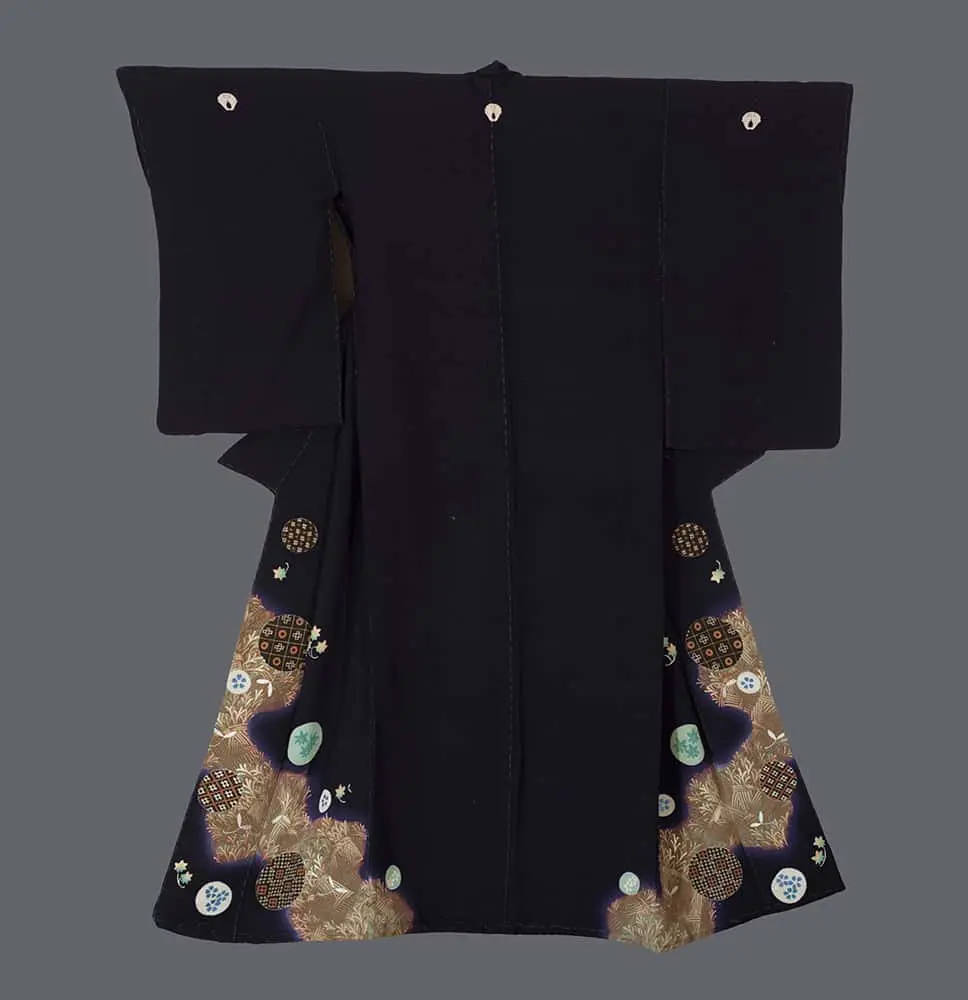This chirimen silk irotomesode exemplifies the sophisticated restraint and calculated elegance that defines formal Japanese women's wear, while simultaneously showcasing the technical innovations in silk-screening that transformed textile production during the Taishō period. The garment's deep purple ground creates a dramatic canvas of negative space, embodying the Japanese aesthetic principle of ma (negative space) where what is not decorated becomes as important as what is. The design is strategically concentrated in the lower portion of the kimono, following the traditional placement hierarchy for married women's formal wear, but executed with a distinctly modern sensibility that reflects the period's embrace of new artistic possibilities.
The decorative program reveals a masterful integration of traditional motifs rendered through contemporary silk-screening techniques, creating intricate geometric patterns that include delicate lattice work, stylized chrysanthemums, and circular medallions in gold, white, and pale green against rich brown and purple grounds. The bamboo and floral elements speak to classical Japanese symbolism - bamboo representing resilience and moral integrity, while the chrysanthemums evoke autumn beauty and the imperial court. However, the treatment of these motifs shows clear influence from Art Nouveau and early Art Deco movements, with their emphasis on geometric organization and the flattening of natural forms into decorative patterns. The silk-screening process allows for precise registration of multiple colors and creates crisp edges that would have been difficult to achieve with traditional hand-painting or dyeing methods, marking this piece as a product of Japan's rapid technological modernization while maintaining its cultural aesthetic roots.
The artwork features a beni-red silk lining that's slightly padded, with added embroidery highlights. Its measurements are 49 inches (124 cm) from sleeve-end to sleeve-end and 58 inches (147 cm) in height.
.avif)







